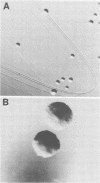Abstract
Bile acid sulfates, formed in human and rat livers, are desulfated by the intestinal microflora. In our study we first isolated from conventional rat feces an unnamed bacterium, termed strain S1, which desulfated the 5 beta-bile salt 3 alpha-sulfates in vitro and in vivo after association with gnotobiotic rats. Strain S1 also possessed 12 alpha-hydroxysteroid dehydrogenase and bile salt-deconjugating activities. The strain was a strict anaerobic, CO2-requiring, gram-negative, sporeforming rod and was designated as belonging to the genus Clostridium. Growth was scarce in culture media, unless in the presence of 0.1% taurine, a sulfur-containing amino acid. Addition of this substance raised the number of bacteria in thioglycolate and peptone yeast media from 10(4) per ml to 10(6) to 10(7) per ml and increased the colony diameter on agar medium from 0.2 mm to 0.5 to 0.9 mm. Sulfatase activity was specific for the 5 beta-bile salt sulfates, leaving the 5 alpha-bile salt sulfates unchanged. In addition, the sulfatase activity was cell bound, and its production was dependent on the composition of the culture medium, although no minimal sulfur medium was required for sulfatase activity.
Full text
PDF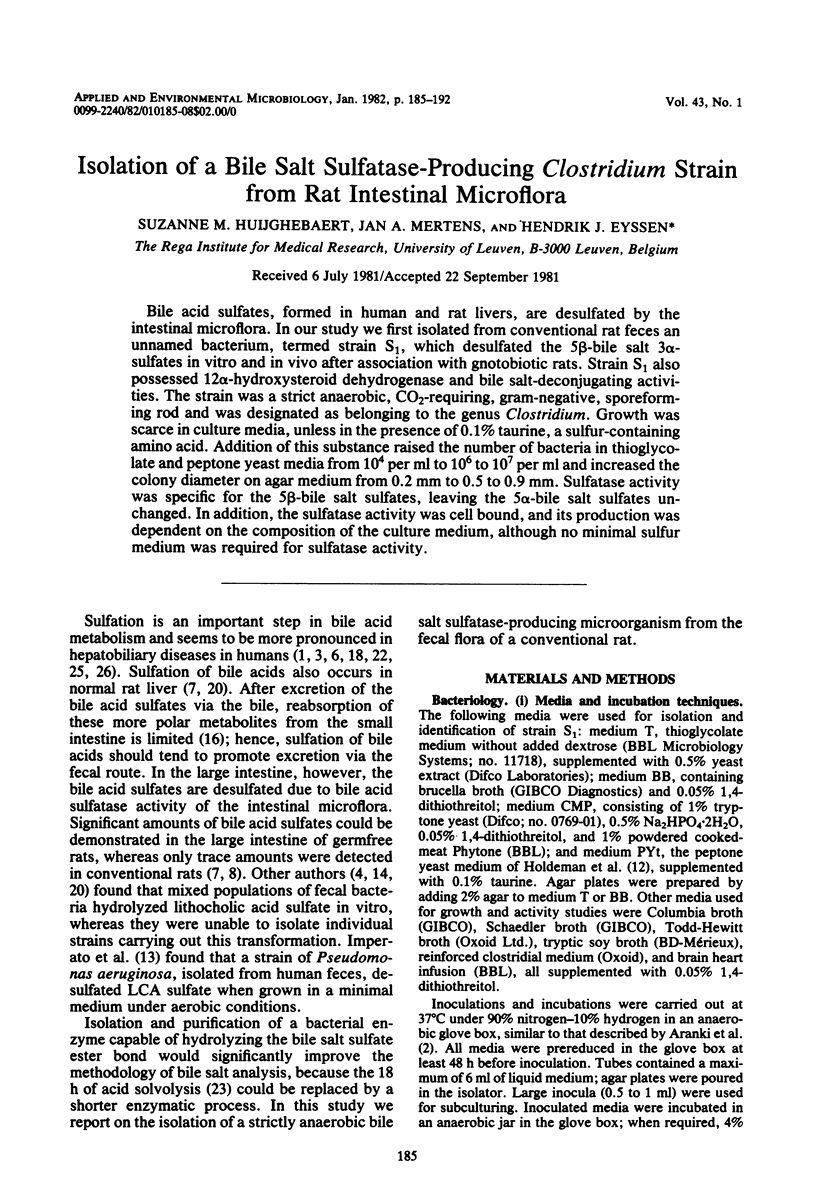
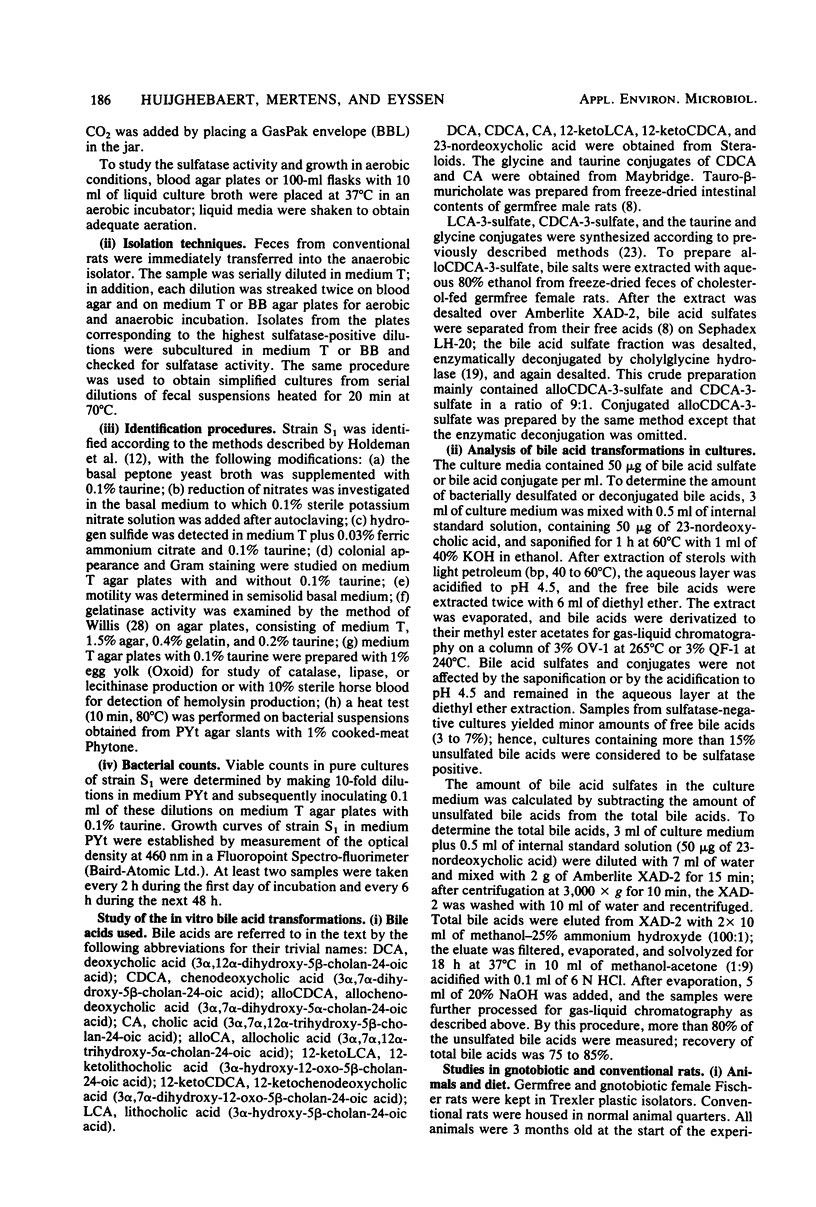
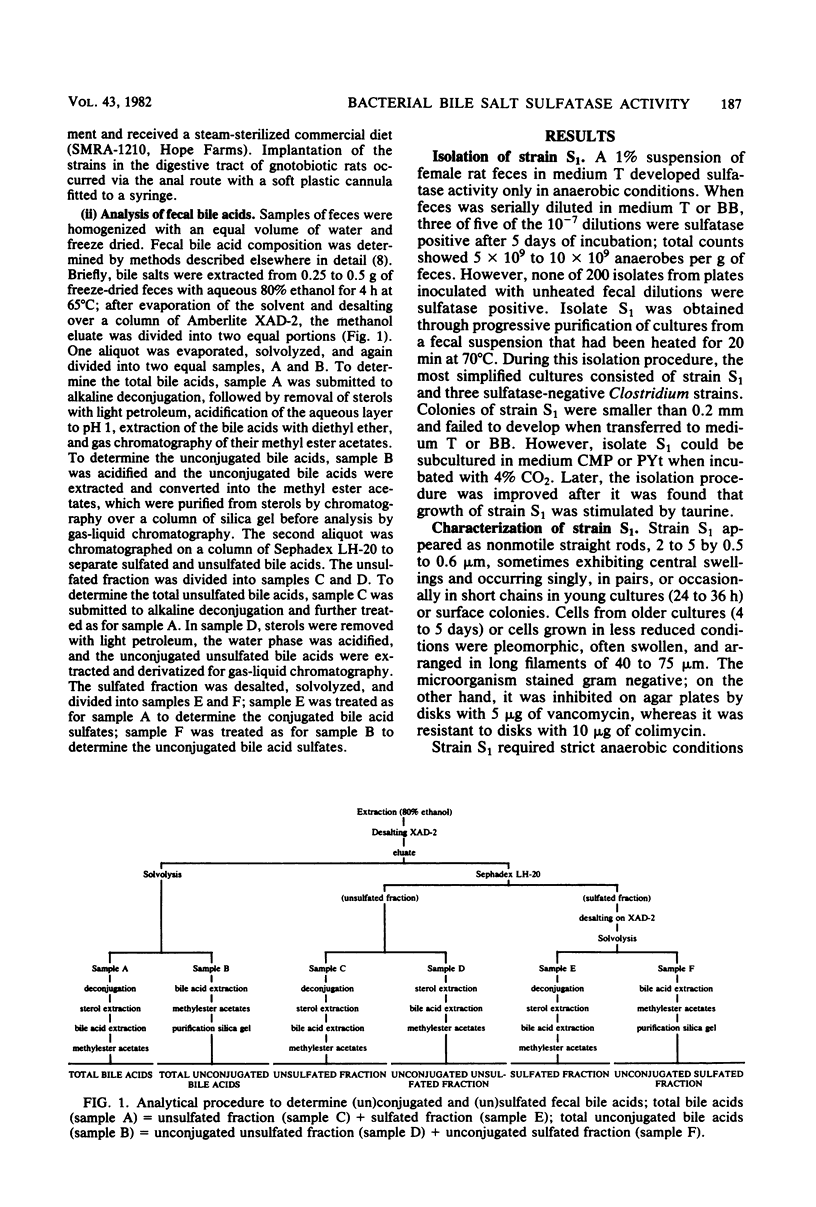
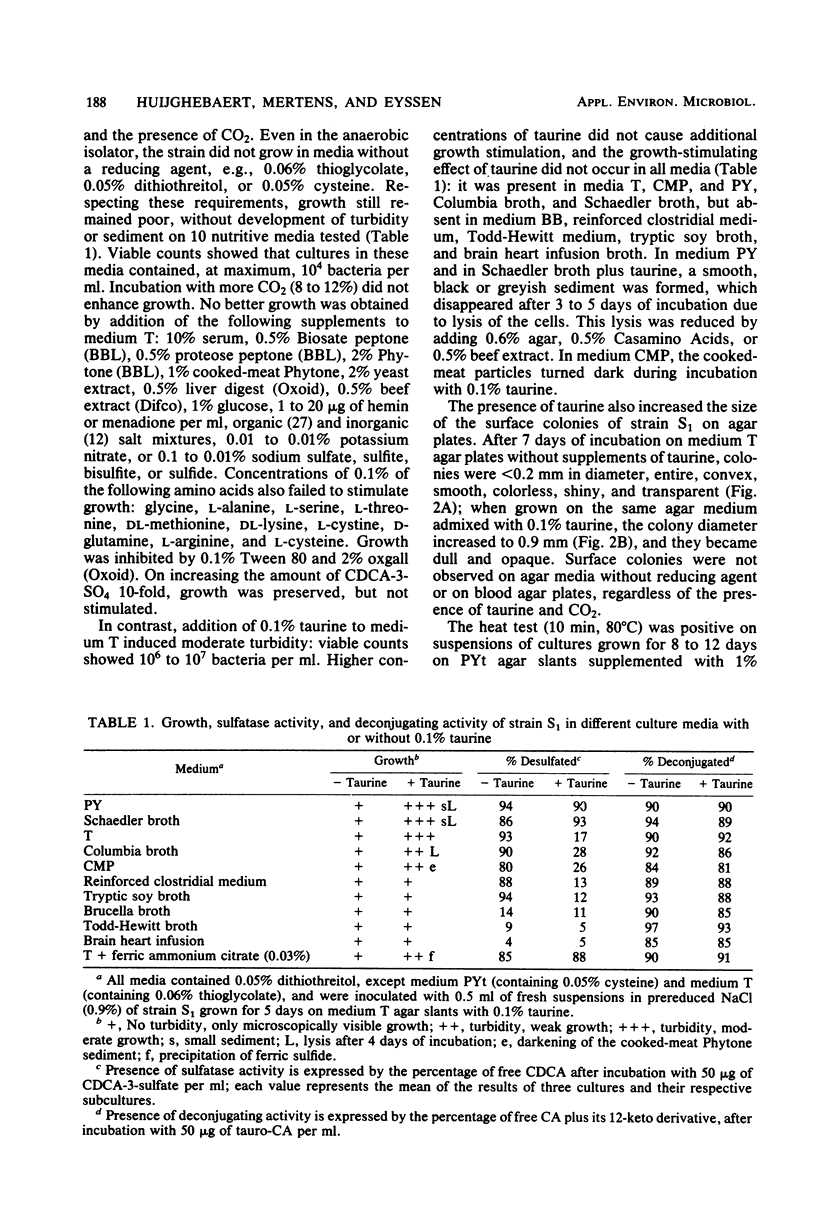
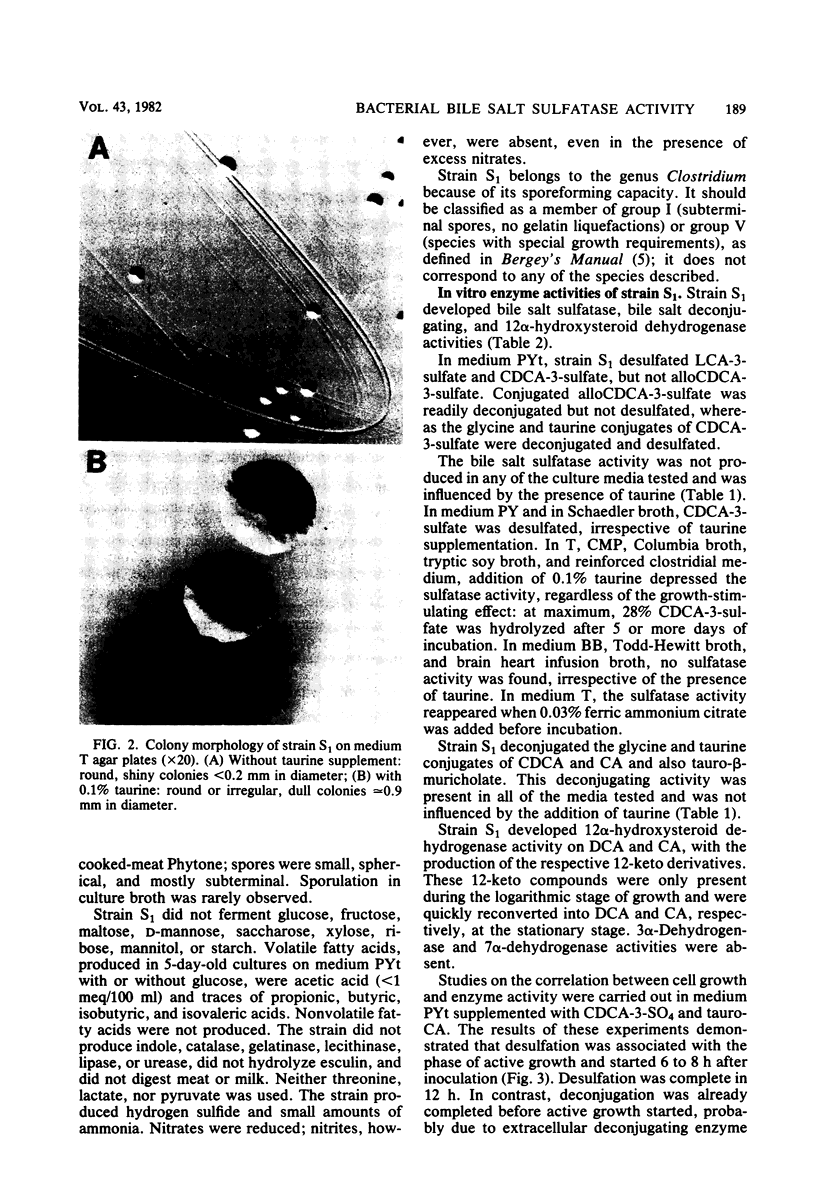
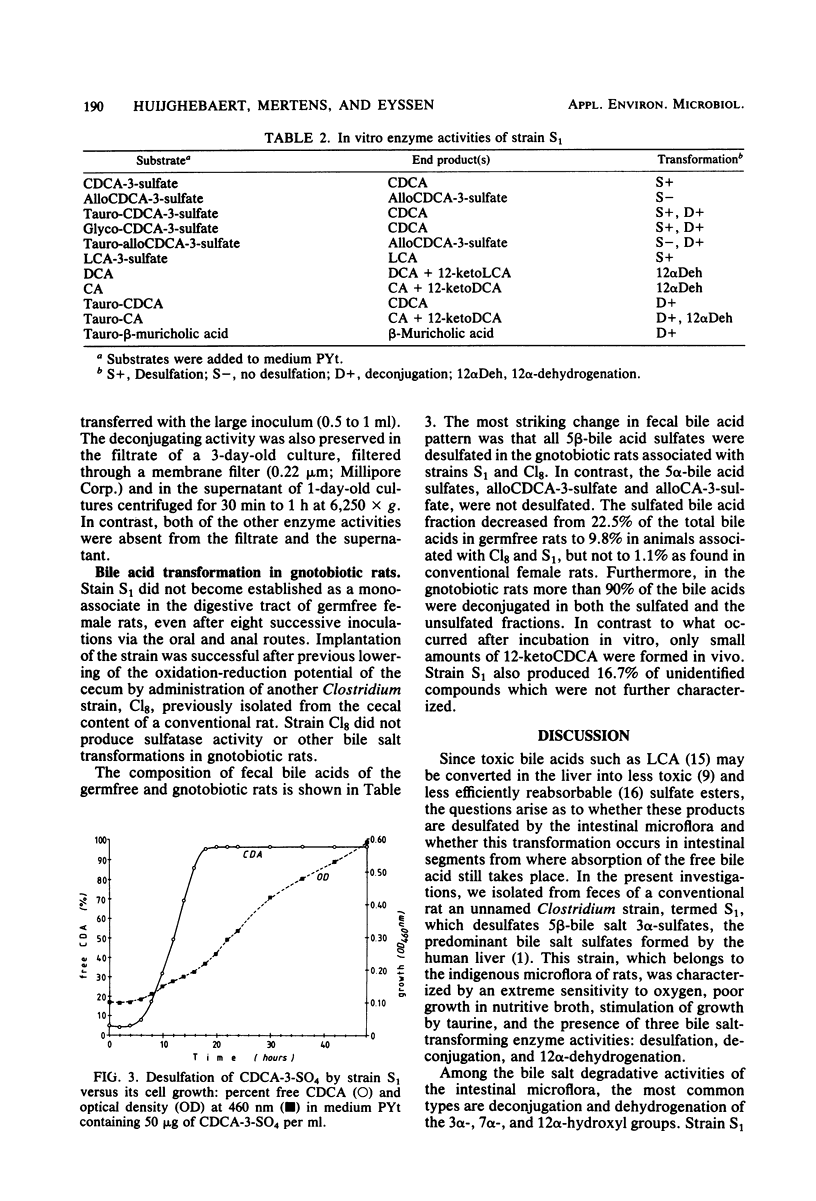
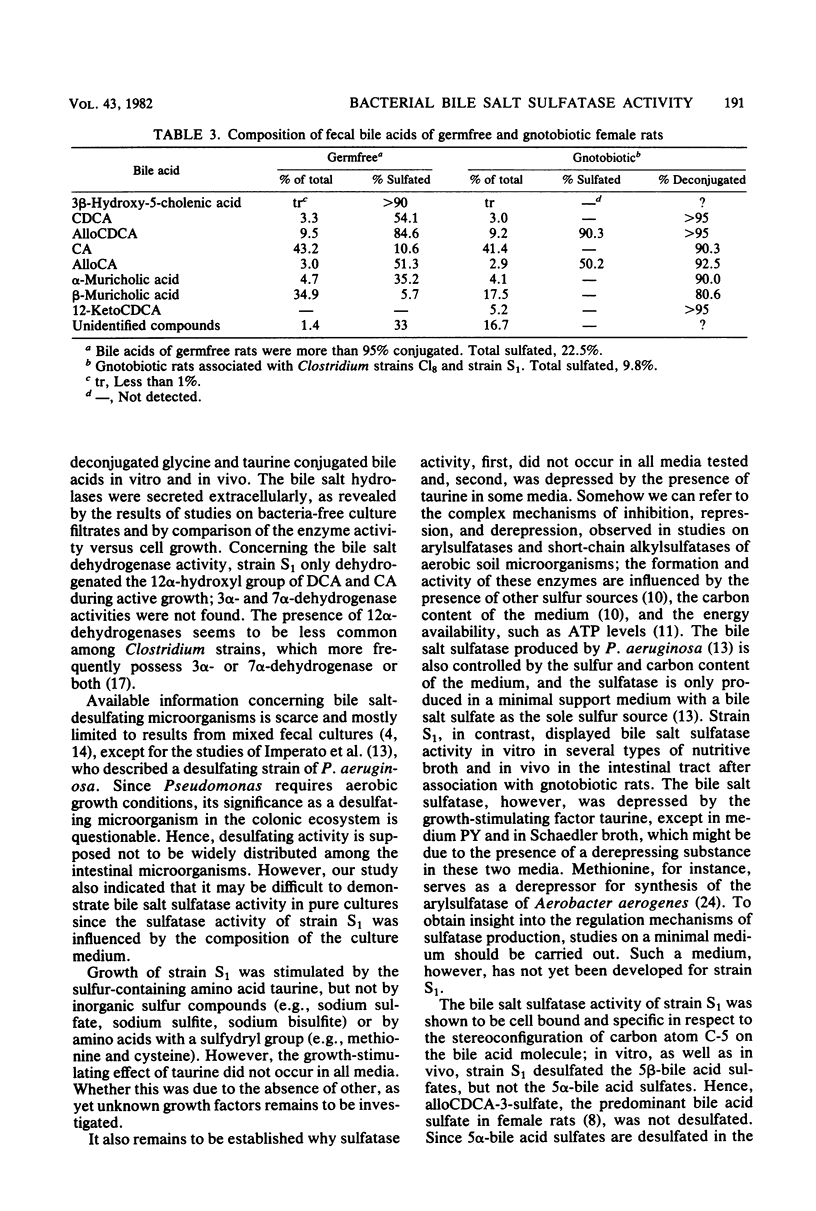
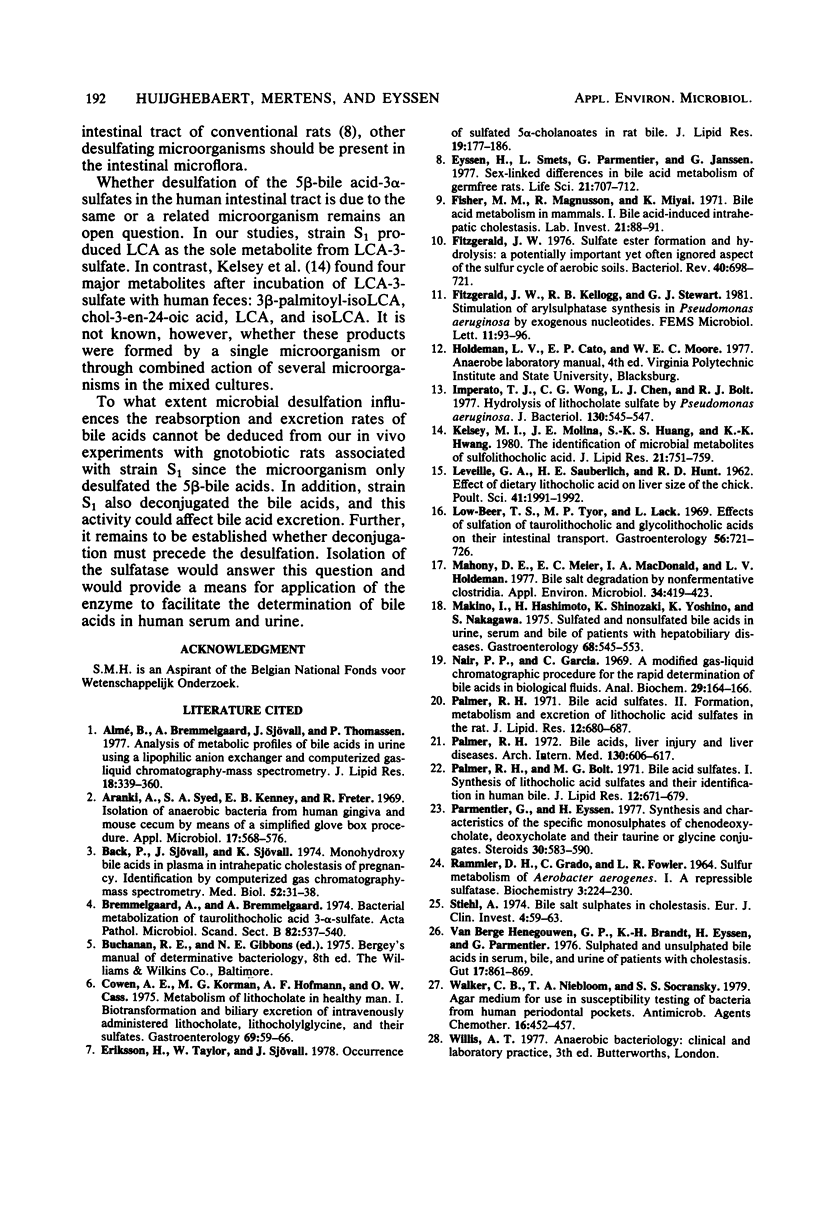
Images in this article
Selected References
These references are in PubMed. This may not be the complete list of references from this article.
- Almé B., Bremmelgaard A., Sjövall J., Thomassen P. Analysis of metabolic profiles of bile acids in urine using a lipophilic anion exchanger and computerized gas-liquid chromatorgaphy-mass spectrometry. J Lipid Res. 1977 May;18(3):339–362. [PubMed] [Google Scholar]
- Arank A., Syed S. A., Kenney E. B., Freter R. Isolation of anaerobic bacteria from human gingiva and mouse cecum by means of a simplified glove box procedure. Appl Microbiol. 1969 Apr;17(4):568–576. doi: 10.1128/am.17.4.568-576.1969. [DOI] [PMC free article] [PubMed] [Google Scholar]
- Back P., Sjövall J., Sjövall K. Monohydroxy bile acids in plasma in intrahepatic cholestasis of pregnancy. Identification by computerized gas chromatography-mass spectrometry. Med Biol. 1974 Feb;52(1):31–38. [PubMed] [Google Scholar]
- Bremmelgaard A., Bremmelgaard A. Bacterial metabolization of taurolithocholic acid 3-alpha-sulfate. Acta Pathol Microbiol Scand B Microbiol Immunol. 1974 Aug;82(4):537–540. doi: 10.1111/j.1699-0463.1974.tb02363.x. [DOI] [PubMed] [Google Scholar]
- Cowen A. E., Korman M. G., Hofmann A. F., Cass O. W. Metabolism of lethocholate in healthy man. I. Biotransformation and biliary excretion of intravenously administered lithocholate, lithocholylglycine, and their sulfates. Gastroenterology. 1975 Jul;69(1):59–66. [PubMed] [Google Scholar]
- Eriksson H., Taylor W., Sjövall J. Occurrence of sulfated 5alpha-cholanoates in rat bile. J Lipid Res. 1978 Feb;19(2):177–186. [PubMed] [Google Scholar]
- Eyssen H., Smets L., Parmentier G., Janssen G. Sex-linked differences in bile acid metabolism of germfree rats. Life Sci. 1977 Sep 1;21(5):707–712. doi: 10.1016/0024-3205(77)90079-0. [DOI] [PubMed] [Google Scholar]
- Fisher M. M., Magnusson R., Miyai K. Bile acid metabolism in mammals. I. Bile acid-induced intrahepatic cholestasis. Lab Invest. 1971 Jul;25(1):88–91. [PubMed] [Google Scholar]
- Fitzgerald J. W. Sulfate ester formation and hydrolysis: a potentially important yet often ignored aspect of the sulfur cycle of aerobic soils. Bacteriol Rev. 1976 Sep;40(3):698–721. doi: 10.1128/br.40.3.698-721.1976. [DOI] [PMC free article] [PubMed] [Google Scholar]
- Imperato T. J., Wong C. G., Chen L. J., Bolt R. J. Hydrolysis of lithocholate sulfate by Pseudomonas aeruginosa. J Bacteriol. 1977 Apr;130(1):545–547. doi: 10.1128/jb.130.1.545-547.1977. [DOI] [PMC free article] [PubMed] [Google Scholar]
- Kelsey M. I., Molina J. E., Huang S. K., Hwang K. K. The identification of microbial metabolites of sulfolithocholic acid. J Lipid Res. 1980 Aug;21(6):751–759. [PubMed] [Google Scholar]
- Mahony D. E., Meier C. E., Macdonald I. A., Holdeman L. V. Bile salt degradation by nonfermentative clostridia. Appl Environ Microbiol. 1977 Oct;34(4):419–423. doi: 10.1128/aem.34.4.419-423.1977. [DOI] [PMC free article] [PubMed] [Google Scholar]
- Makino I., Hashimoto H., Shinozaki K., Yoshino K., Nakagawa S. Sulfated and nonsulfated bile acids in urine, serum, and bile of patients with hepatobiliary diseases. Gastroenterology. 1975 Mar;68(3):545–553. [PubMed] [Google Scholar]
- Nair P. P., Garcia C. A modified gas-liquid chromatographic procedure for the rapid determination of bile acids in biological fluids. Anal Biochem. 1969 Apr 11;29(1):164–166. doi: 10.1016/0003-2697(69)90020-7. [DOI] [PubMed] [Google Scholar]
- Palmer R. H. Bile acid sulfates. II. Formation, metabolism, and excretion of lithocholic acid sulfates in the rat. J Lipid Res. 1971 Nov;12(6):680–687. [PubMed] [Google Scholar]
- Palmer R. H. Bile acids, liver injury, and liver disease. Arch Intern Med. 1972 Oct;130(4):606–617. [PubMed] [Google Scholar]
- Palmer R. H., Bolt M. G. Bile acid sulfates. I. Synthesis of lithocholic acid sulfates and their identification in human bile. J Lipid Res. 1971 Nov;12(6):671–679. [PubMed] [Google Scholar]
- Parmentier G., Eyssen H. Synthesis and characteristics of the specific monosulfates of chenodeoxycholate, deoxycholate and their taurine or glycine conjugates. Steroids. 1977 Nov;30(5):583–590. doi: 10.1016/0039-128x(77)90049-6. [DOI] [PubMed] [Google Scholar]
- RAMMLER D. H., GRADO C., FOWLER L. R. SULFUR METABOLISM OF AEROBACTER AEROGENES. I. A REPRESSIBLE SULFATASE. Biochemistry. 1964 Feb;3:224–230. doi: 10.1021/bi00890a014. [DOI] [PubMed] [Google Scholar]
- Stiehl A. Bile salt sulphates in cholestasis. Eur J Clin Invest. 1974 Feb;4(1):59–63. doi: 10.1111/j.1365-2362.1974.tb00373.x. [DOI] [PubMed] [Google Scholar]
- Walker C. B., Niebloom T. A., Socransky S. S. Agar medium for use in susceptibility testing of bacteria from human periodontal pockets. Antimicrob Agents Chemother. 1979 Oct;16(4):452–457. doi: 10.1128/aac.16.4.452. [DOI] [PMC free article] [PubMed] [Google Scholar]
- van Berge Henegouwen G. P., Brandt K. H., Eyssen H., Parmentier G. Sulphated and unsulphated bile acids in serum, bile, and urine of patients with cholestasis. Gut. 1976 Nov;17(11):861–869. doi: 10.1136/gut.17.11.861. [DOI] [PMC free article] [PubMed] [Google Scholar]



